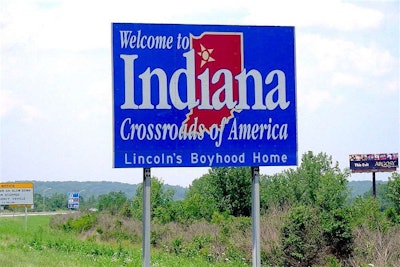 Photo credit: oldskulphoto/Flickr
Photo credit: oldskulphoto/FlickrThe Indiana general assembly’s group dedicated to finding long-term solutions for road and bridge funding in the state has issued a report determining that a combination of fuel taxes, road usage charges and ancillary fees is needed.
The Funding Indiana’s Roads for a Stronger Safer Tomorrow Task Force (FIRSST) has met five times this year, with the recommendations coming from its most recent meeting Dec. 19.
The FIRSST final report includes the following recommendations for the general assembly to adopt in 2017:
- Immediately increase the gasoline tax to recover some or all of the purchasing power lost since the gasoline tax was last increased in 2003.
- Immediately increase the special fuel tax to recover some or all of the purchasing power lost since the special fuel tax was last increased in 1988.
- Immediately increase the motor carrier surcharge tax to recover some or all of the purchasing power lost since the motor carrier surcharge tax was last increased in 1988.
- Index the rates for the gasoline tax, special fuel tax, and motor carrier surcharge tax on an annual basis to ensure funding stability.
- Implement road usage fees on alternative fuel vehicles, electric vehicles, and other vehicles, which pay little or no fuel tax in support of their use of the roads.
- Explore options to implement equitable and modern tolling systems on state controlled highways and interstates to fund major highway and interstate improvement projects.
- Implement a per vehicle fee on all vehicles registered in Indiana.
- Increase the tire disposal fee.
- Shift additional revenue generated from the use tax on gasoline from the state general fund to dedicated transportation funds.
- Improve over-weight truck enforcement through electronic monitoring of truck weight and permits.
- Increase fees that are subject to the International Registration Plan.
- Consider a limited restoration of the Indiana Finance Authority’s ability to provide funding through smart debt financing — including highway revenue bonds, grant anticipation revenue vehicle bonds (GARVEE bonds), and transportation infrastructure and innovation act (TIFIA) bonds, provided that the expected life of the project to be financed exceeds the length of the debt repayment.
The task force also recommends the general assembly adopt legislation requiring Indiana Department of Transportation (INDOT):
- Develop a set of generally accepted road and bridge metrics, including but not limited to metrics that measure asset condition, congestion, safety, and economic contribution.
- Benchmark Indiana’s system of transportation infrastructure against similarly situated states using the generally accepted metrics.
- Develop a set of clearly articulated goals related to asset condition, congestion mitigation, safety improvement, and economic impact that can be measured and assessed on a regular basis.
- Develop and implement a unified, multi-variant statistical model that will be used to prioritize state transportation projects and predict future funding needs.
FIRSST recommends for this statistical model that INDOT should make the inputs to the model to reflect the “goals and metrics” the agency develops; incorporate funding and return on investment; update the model regularly due to the “evolving” needs of transportation; and use the model outputs as a guide rather than a “mandate” to allow the agency flexibility in addressing needs or “unexpected events” that might not be included in the model.
The task force’s final report is available here.










